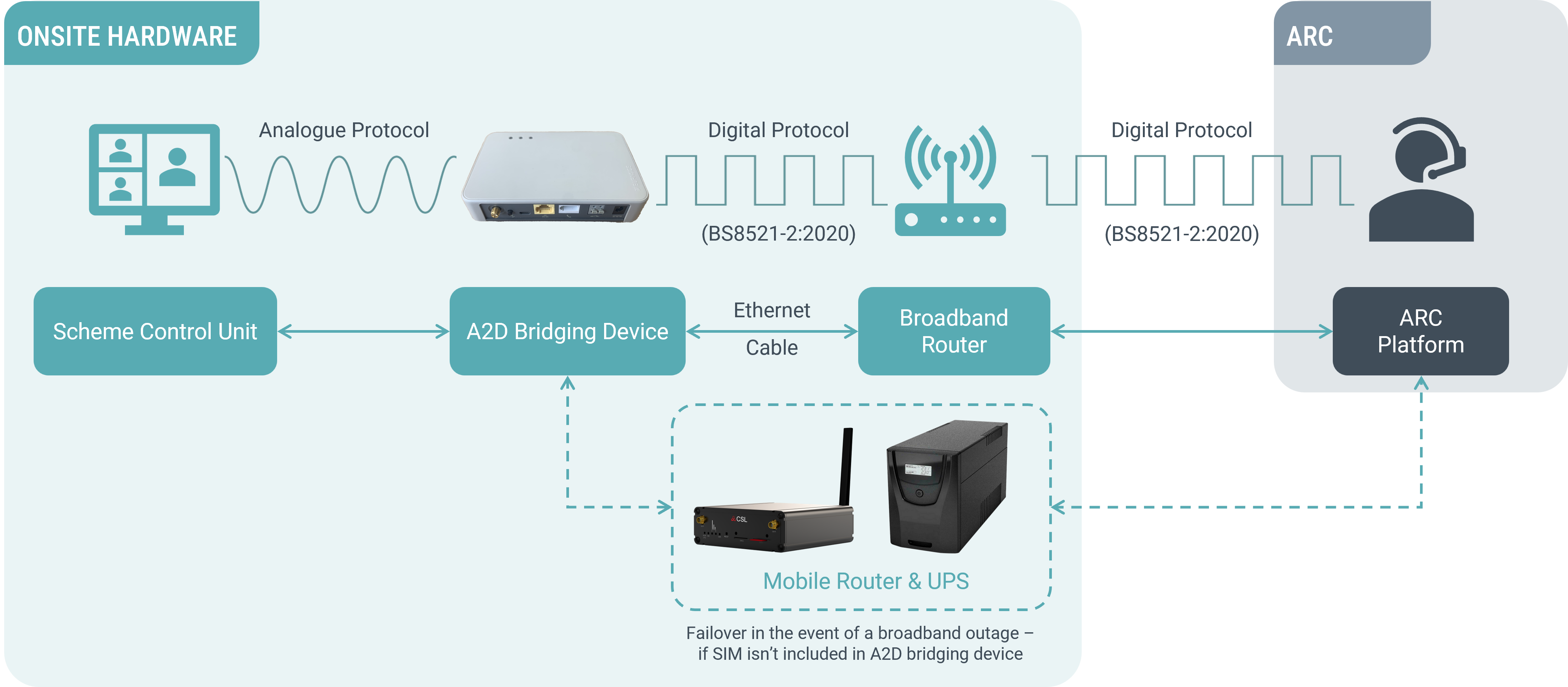Digital Transition FAQs
Why has it taken so long for Tunstall to communicate?
The UK is in the midst of one of its most significant infrastructure shifts: the retirement of the Public Switched Telephone Network (PSTN) and Wholesale Line Rental (WLR) services in favour of all-IP digital networks. The deadline for switch-off is now 31 January 2027 (UKTelehealthcare, 2024), having been extended from 2025. The transition is framed as inevitable, but for those responsible for housing and care, the risks are just as important as the opportunities.
Tunstall, like many other service providers, have been searching for the best possible alternative to the resilience of analogue connections that has served us so well. We recognised that the digital transition would span several interconnected themes. We had a good understanding of the hardware perspective early on, but our detailed assessments showed that the consistency we required couldn’t be delivered across the many different variations of infrastructure available.
Our position remains one of safety for service users; without mitigation for the factors we have identified, and the absence of certainty, our view was to avoid deployment of a service that had potential to leave people at risk.
What is Tunstall’s recommendation on the best practice for moving away from analogue?
Our number one recommendation is to upgrade to a fully digital system, such as Communicall Digital. A digital system offers the highest level of long-term reliability, functionality, return on investment and built-in resilience.
Of course, we appreciate not all budgets allow for complete system replacements, in which case our recommendation is then to speak to your telephone network provider (eg; BT Business) to discuss any options open to you that will extend the life of your analogue services. This not only allows you to continue offering the same care as you always have without any new hardware of interruptions, but also gives you more time to plan and budget for your transition to digital.
If your telephone provider cannot help postpone your transition and if full digital is not yet a commercial option for you, there are a range of Analogue to Digital “Bridging” devices that essentially convert analogue alarms to digital. These are seen as a transitional products and they incur the ongoing costs expected from a full digital system (broadband connectivity and cellular back-up being key) but will allow your scheme equipment to continue operating without any reliance on analogue networks. Our own IP Connector is currently undergoing the final stages of testing, with live deployments expected to begin in the coming weeks.
What do I do with the Tunstall IP Connectors that are already installed in my schemes?
We will work through these with you, our biggest concern right now is getting you a solution in place that means you can carry on receiving and providing the service you need through the best connectivity and solution possible.
How do I know if I have the copper wires from my premises?
Ultimately, this is a question for BT Business to answer. We can work with BT Business to help you understand the options if you would like us to.
How do I engage with BT Business?
If you have an existing account with them, you should contact your account manager. If you would like help, we can support with the process.
What is a “PDPL” (Pre-Digital Phone Line)?
This document will help you understand what BT Business can provide.
How do I know which choice to make?
We have created this decision tree to help guide what might be the best option for you. If you are still unsure, we will work through the options with you. Our team will call in the coming days and weeks, but please contact us at a2d@tunstall.com if you need an answer more urgently.
Do I need broadband to utilise a digital bridging device?
Yes, FTTP if it is available and if not, SOGEA (see below). Digital bridging devices convert analogue alarms and send them over IP networks, therefore need a reliable, dedicated broadband connection to allow alarms to be sent off site. As with any digital solution relying on stable off-site connectivity, you may also need a back-up 4G router and suitable UPS (dependent on the digital bridging solution being used) to ensure alarms are still transmitted in the event of power or broadband issues.
What is FTTP?
“Fibre to the Property”. FTTP delivers full-fibre broadband directly from the exchange to the property using fibre optic cables only. This provides a fast, stable, and reliable connection ideal for digital telecare devices, with no reliance on traditional copper phone lines.
What is SOGEA?
“Single Order Generic Ethernet Access”. SOGEA is a broadband service that uses the existing copper network for the final connection into the property but removes the traditional phone line element. It provides internet access without a separate telephone service, making it suitable for digital telecare use where FTTP isn’t yet available.
Can I use my existing corporate network for a digital bridging device?
No. We strongly recommend a dedicated broadband connection for any digital solution (in the same way as you would use a dedicated phone line for analogue alarms). The broadband supply should also be from a reputable supplier such as BT Business, and backed up with a 4G router where needed.
Does PDPL require any extra equipment fitting at the scheme?
No. PDPL (Pre-Digital Phone Line) is managed by BT Business at the exchange so nothing onsite is affected.
Does PDPL require a back-up battery?
No. Again, all infrastructure related to PDPL is managed by BT Business so you as the customer need do nothing once installed.
More detail about each of these options is shown in the visuals below:
BT Protective Migration Solutions (including PDPL)

Analogue to Digital Bridging Device

